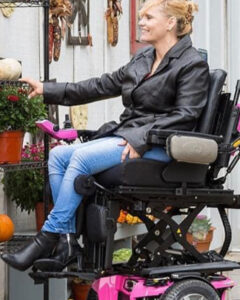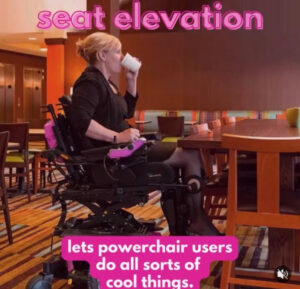We are a full Service DME

Our location for Wheelchairs Drop off for our manufacturers
Diamondville:310 US Highway 30, Diamondville, WY 83116: Phone: 307-877-2993
Riverton Wyoming: 1380 E Monroe Ave, Riverton WY 82501 Phone: 307-463-0068
Kemmerer Main Office: 806 Pine Ave, Kemmerer WY 83101 Phone: 307-877-2993
We understand that finding the right power wheelchair, consider your individual needs, including mobility requirements, comfort preferences, and living environment. Key factors include seat size and weight capacity, battery life and range, maneuverability, and features like suspension and control systems. Seeking professional guidance from a mobility specialist can help ensure you choose a wheelchair that best suits your lifestyle.
Detailed Considerations:
Mobility Needs and Terrain:
 Determine whether you need a power wheelchair primarily for indoor or outdoor use, and assess the types of terrain you’ll encounter (e.g., smooth surfaces, ramps, uneven ground).
Determine whether you need a power wheelchair primarily for indoor or outdoor use, and assess the types of terrain you’ll encounter (e.g., smooth surfaces, ramps, uneven ground).
Weight Capacity and Size:Ensure the wheelch air can comfortably support your weight and fit through doorways and in your living space.
Seat Comfort and Adjustability:
Prioritize adjustable seating features like seat height, depth, backrest angle, and cushions to ensure optimal comfort and posture support.
Battery Life and Range:Consider the distance you typically travel and choose a wheelchair with a battery that provides sufficient range to meet your daily needs.
Maneuverability and Turning Radius:If you need to navigate tight spaces, look for a wheelchair with a small turning radius and good maneuverability.
Control Options: Explore different control systems (e.g., joystick, head controls, sip-and-puff) and choose one that is easy for you to operate.
Seat Elevation Options: Now can be standard on all Power wheelchairs this option allows you to reach the world aFinding the right seat elevation for a power wheelchair involves considering several factors, including user height, intended use, and the need for transfers and reaching tasks. Seat height typically ranges from 16 to 21 inches, with 19 inches being common, but some individuals may need as low as 14 inches or as high as 23 inches.

Key Considerations:User Height:Taller individuals generally require a higher seat height.
Reaching:It can improve access to high shelves and other objects, reducing strain on the upper extremities.
Social Interaction:Being at eye level with peers can improve social interaction and communication.
Functional Needs:
Consider how the seat elevation will be used for daily activities like work, home tasks, and community access.
 Transfers:Seat elevation can make transfers easier, especially when transferring to a lower surface.
Transfers:Seat elevation can make transfers easier, especially when transferring to a lower surface.
Safety Features:
Look for anti-tip wheels, seat belts, and sturdy frames for added safety.
Ease of Transport and Storage:
If you plan to travel with your wheelchair, consider models that are foldable, lightweight, or easily disassembled.
Living Conditions:
Evaluate your home environment to ensure the wheelchair can navigate your living space, including doorways, bathrooms, and around furniture.
Customization and Adjustability:
Look for wheelchairs with adjustable features like armrests, footrests, and seating systems to customize the fit and maximize comfort.
Professional Guidance:
Consulting with a mobility specialist at Summit Services & Supplies can provide valuable insights and help you make an informed decision.
Test Drive A power wheelchair Contact us!
Whenever possible, test drive the wheelchair in your intended environment to assess its performance and suitability.
